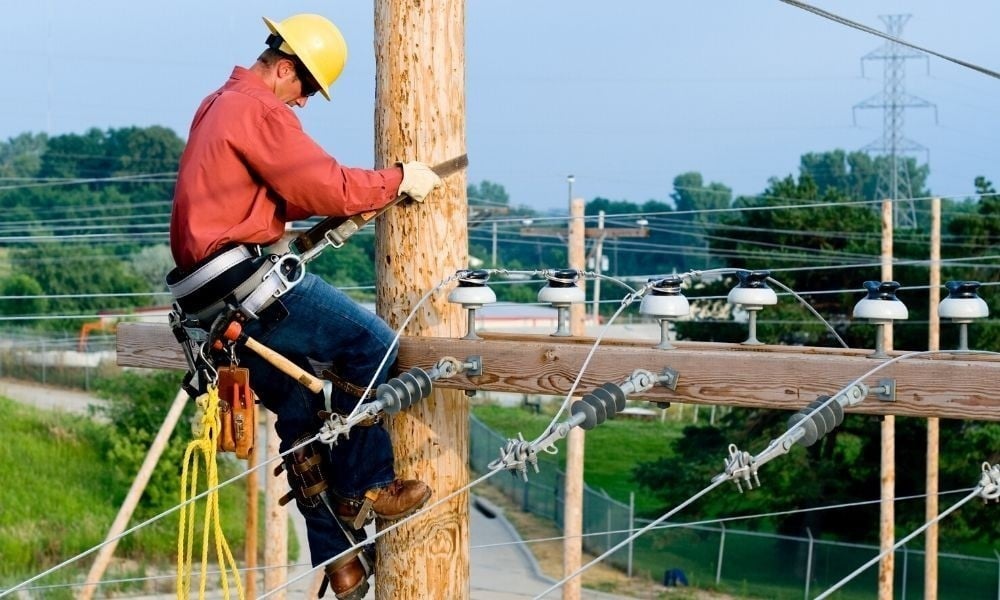How to Properly Climb with Spikes

To the passing observer, climbing an electrical pole may look a lot simpler than the complex lifeline system a tower climber has set up. However, for even the most experienced lineman, climbing wooden electrical poles day in and day out can be incredibly dangerous. Softer than the materials tower climbers are used to dealing with, wood is easier to splinter as you climb and can create painful, even lethal, injuries. It’s for this reason that linemen typically use climbing spike pads to ascend the pole comfortably, with minimal bare skin contact with the hazardous surface. Learn how to properly climb with spike pads and ensure your safety as you go about your work.
Wearing the Gear
When getting ready to climb a pole, it’s crucial that what you’re wearing fits the part. For starters, you should be wearing a long-sleeved work shirt, long jeans, thick gloves, and a hardhat to protect yourself from the splintering wood as you climb. Once properly dressed, secure yourself in your lineman climbing belt or harness. Make sure you’re wearing it just above your hip bones to get the right amount of support while you climb. Remember that this belt should also come equipped with a strong climbing strap that you’ll use to ascend and descend. Lastly, strap on your climbing spikes by fitting your boot onto the hooked platform, tightening the upper strap an inch below your knee, and securing the bottom strap around your boot.
Ascending and Descending the Pole
After you secure yourself in your protective and climbing gear, you’re ready to begin the ascent. First, you’ll want to unhook one end of the climbing strap, wrap it around the pole, and connect it to the other side of your belt. Then, to properly climb with spikes, simply drive your first boot into the wood at a 45-degree angle, hike the belt up the pole, then repeat with the other side. As you climb, make sure that you’re not leaning either too close or too far away from the pole to keep the spikes locked in place. Otherwise, they could begin to slip out and cause you to fall. When descending, you’ll want to repeat this process but in reverse—lowering the belt down the pole to help support you as you go.
Work Positioning
When you reach the location of the work you need to do, start by leveling off your climbing strap and leaning back on your belt. This way, you have both hands free and your spikes remain planted securely in the pole. If you need to get closer to the pole, you can then tighten your climbing strap to get yourself into the proper position. Just be sure that you aren’t forcing yourself flush against the pole or leaning too far in.
